The iPhone 15 Pro Max should demonstrate the zenith of Apple’s mobile camera technology. The phone has the freshest camera hardware matched with Apple’s latest computational photography smarts. Going beyond imaging, the Pro Max has the biggest screen, the most powerful internals, and the highest price of any iPhone, so it makes sense to expect it to be the best iPhone for photography.
Some years, Apple’s two flagships – the Pro and Pro Max – enjoy identical camera setups and other years, the Max gets a little something all of its own. This is one of those – little something extra – years, with Apple’s 15 Pro Max’s optical reach bumped up to a 5x zoom equivalent. More exciting still is the fact it introduces Apple’s tetra-prism periscope zoom camera, which is much more powerful on paper than the 3x zoom of the vanilla iPhone 15 Pro.
Here’s the thing, though: 5x zoom is equivalent to around 120mm in full-frame focal length terms, and while that’s a mighty reach, it isn’t always the most useful focal length. With just three cameras, Apple’s mightiest iPhone also leaves a massive void of optical coverage between 1-5x.
Thanks to the Pro Max’s powerful primary sensor, a 1-2.5x reach, up to around 60mm should still look great, but at 60-120, we’d expect quality to start crumbling based on the specs and our experience.
And so, in this hands-on with an iPhone 15 Pro Max, ahead of our full review, we’ll try and answer one key question: has Apple overshot creating a balanced camera system and focused too much on maxing out the zoom range?
iPhone 15 Pro Max: Design
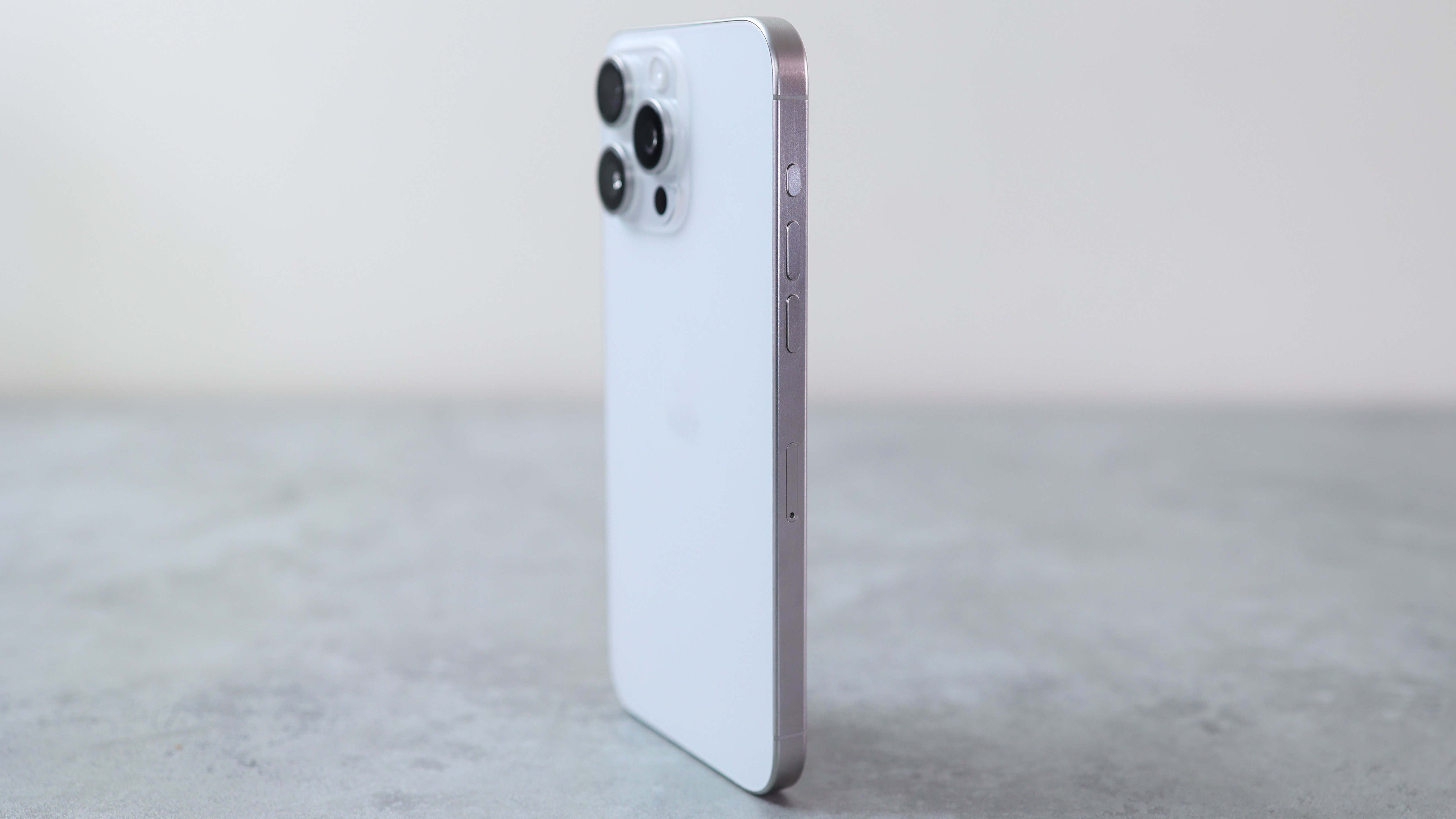
While at first glance, the new iPhone 15 Pro Max might look like a carbon copy of last year’s iPhone 14 Pro Max, a closer look reveals a handful of meaningful updates that make for a more pleasant design in-hand. The most obvious of these updates is the phone’s frame.
Unlike past iPhones, the 15 Pro Max enjoys a matte titanium frame that doesn’t attract fingerprints with quite so much intent as the shiny polished steel rims of old. The edges of the frame also curve in to meet the glass, making for a much more comfortable hold when compared to the stark angles we’re used to in the Pro line.
The new styling adds an almost unibody feel to the phone, though the back is glass and has a subtly contrasting frosted texture.
New iPhone, new colors, and the 15 Pro and Pro Max are available in Natural Titanium, Blue Titanium, Black Titanium, and White Titanium, which is the version we tested. Apple’s Ceramic Shield glass protects the front of the phone, and the phone is IP68 dust and water-resistant.
Weighing 221g, the iPhone 15 Pro Max is a fair bit lighter than the 240g iPhone 14 Pro Max. This is a big deal, considering the Pro Max has historically been the heaviest phone on the market – but not anymore.
The 15 Pro and Pro Max both see a couple of critical updates dotted around their frames. The first is a USB-C port at the base, which is a very welcome, some would say long overdue move away from Apple’s proprietary Lightning Port.
The next major difference between the 15 Pro Max and the 14 Pro Max is the alert slider, or lack of it, for Apple’s 2023 Pro line. This year, it’s been swapped out for a customizable Action Button that can change focus mode, launch the camera, torch, Voice Memo app, Magnifier, an accessibility feature, or fire up silent mode.
Ultimately, the iPhone 15 Pro Max’s design updates are subtle, but they all come together to create a tangibly more enjoyable experience.
iPhone 15 Pro Max: Screen
With its 6.7-inch Super Retina XDR display, the Pro Max enjoys the largest screen on an Apple smartphone and the highest-quality panel with its OLED screen technology and display credentials list as long as the best Android phones on the scene.
It’s a 120Hz panel and features HDR support with a DCI-P3 wide color gamut as well as Apple’s True Tone display tech, so it dials up warmth to compensate for whatever the ambient light is doing where you are.
Like the 14 Pro series, the 15 Pro Max has a Dynamic Island for the front camera system and supports Apple’s Always-on Display feature.
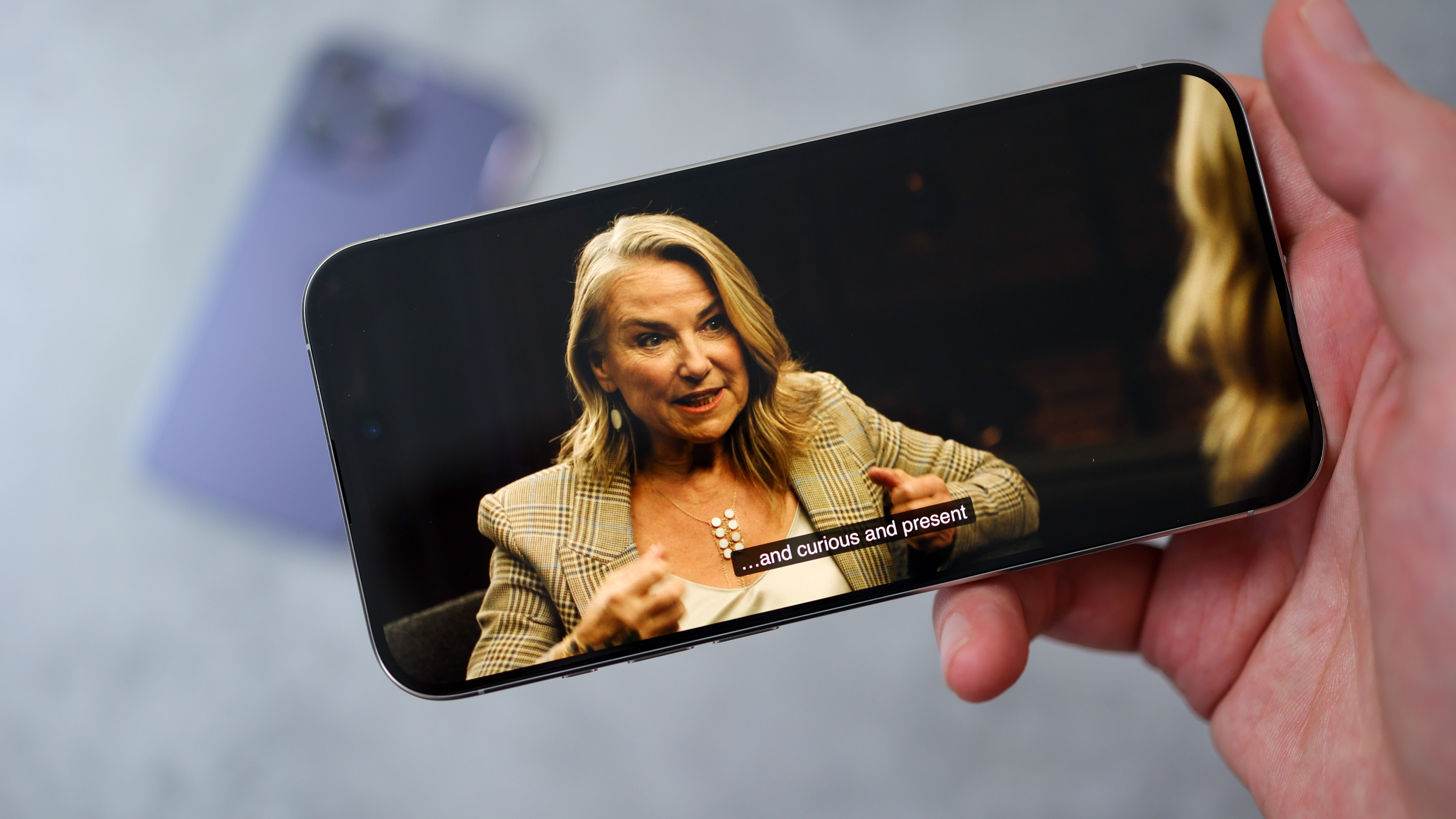
Super bright, the 15 Pro Max’s screen shines up to 2,000 nits peak brightness outdoors, 1,600 nits in other bright environments, and has a 1,000 nits typical max brightness.
This is also the first iPhone to support USB-C to HDMI projection, so you can hook the 15 Pro up to a TV or monitor for big-screen YouTube watching or photo sharing.
Unsurprisingly, the Pro Max has a fantastic-looking display on first impression, whether head-on or at an angle; colors hold onto their integrity, and viewability is great indoors or out.
iPhone 15 Pro Max: Camera specs
While the iPhone 15 Pro brings back the same camera hardware as the 14 Pro, the 15 Pro Max upgrades the telephoto lens and introduces Apple’s new 5x zoom tetraprism periscope system.
The main camera has a 48MP resolution, 1/1.29-inch sensor, and a 24mm f/1.78 aperture lens. Using Apple’s second-generation sensor-shift OIS and capturing 48MP and 24MP photos, it combines familiar hardware with a handful of optimizations for 2023.
The 12MP ultra-wide camera features a 13mm focal length and an f/2.2 aperture lens, and the 12MP telephoto camera features a 5x equivalent, 120mm reach with an f/2.8 aperture.
In the specs on the iPhone’s product page, Apple cheekily suggests there’s a 12MP telephoto lens with a 48mm f/1.78 lens, but this is just a reference to the primary camera and a digital crop. Yes, it can capture a native 12MP image at 48mm owing to the high-resolution sensor, but it wouldn’t deliver the optical performance of a dedicated, high-quality 48mm camera, so don’t let Apple’s optimistic marketing suggest otherwise.
Finally, the telephoto camera is a 12MP sensor with a 120mm focal length and an f/2.2 aperture. This can capture a 5x optical zoom equivalent and a 25x digital zoom.
The cameras also include new software optimizations that work brilliantly. You can retrospectively activate Portrait Mode, for example, as well as adjust your default focal length when you launch the camera, with options including 24mm (1x), 28mm (1.2x), and 35mm (1.5x), bypassing potential lens distortion and edge softness.
iPhone 15 Pro Max: Camera zoom
With Apple’s headline feature for the iPhone 15 Pro Max camera being its zoom, it’s great to see the phone deliver such strong results in well-lit environments at a 120mm/5x zoom equivalent range.
Below are two images taken in similar environments demonstrating the shallow depth of field you can achieve with the 15 Pro Max’s native 120mm.
The 15 Pro Max’s telephoto camera isn’t the most versatile around by a long stretch. It has a nearest focus distance of no less than a meter, so it doesn’t step in as a telemacro camera like that of the incredible Huawei P60 Pro’s periscope camera or Honor Magic 5 Pro’s commendable 3.5x telephoto. It’s best suited to very well-lit scenes and far away objects.
Apple isn’t as afraid of noise as Samsung and other smartphone makers, and with its smaller telephoto sensor versus the iPhone 15 Pro Max’s primary camera, when you zoom in past 5x, there’s more noise. Detail is strong though, and as you can see in the photo below, this extends to middling and even low light.
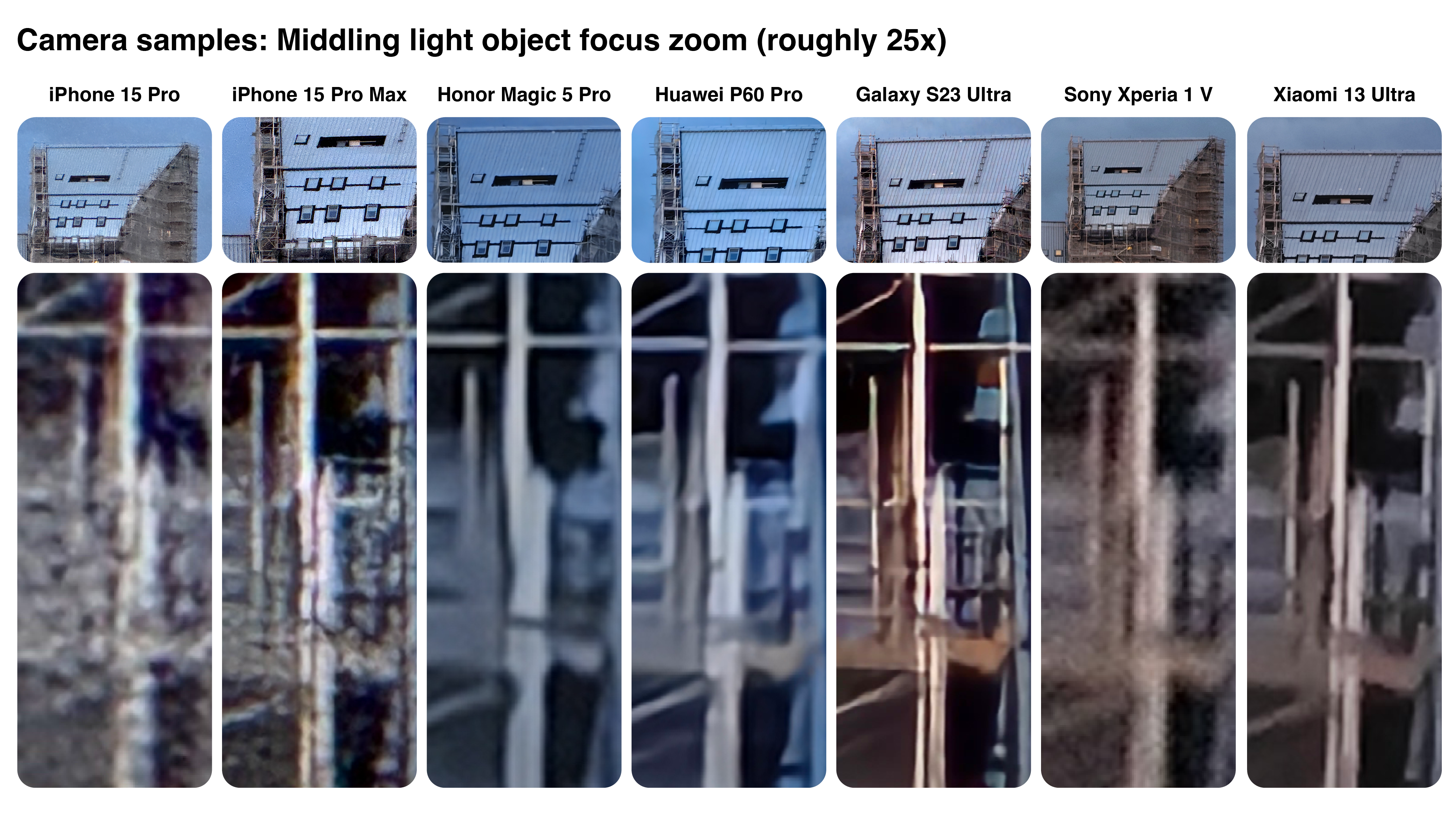
If you don’t see yourself leaning on 120mm and beyond, there’s an argument for picking up a 15 Pro over the 15 Pro Max. With its 120mm periscope lens, the range between 24mm and 120mm exclusively uses the primary camera’s 48MP sensor.
As you can see from the illustration below, the 15 Pro Max has the weakest 4.9x zoom quality of all the competition, including the 15 Pro. This isn’t surprising, as Honor and Huawei’s phones cap out at around 3.5x optical zoom – 70mm – a typical focal length for portraits, while the Samsung Galaxy S23 Ultra, Xperia 5 V, and Xiaomi 13 Ultra all include optical coverage between their main cameras and furthest reach zooms.
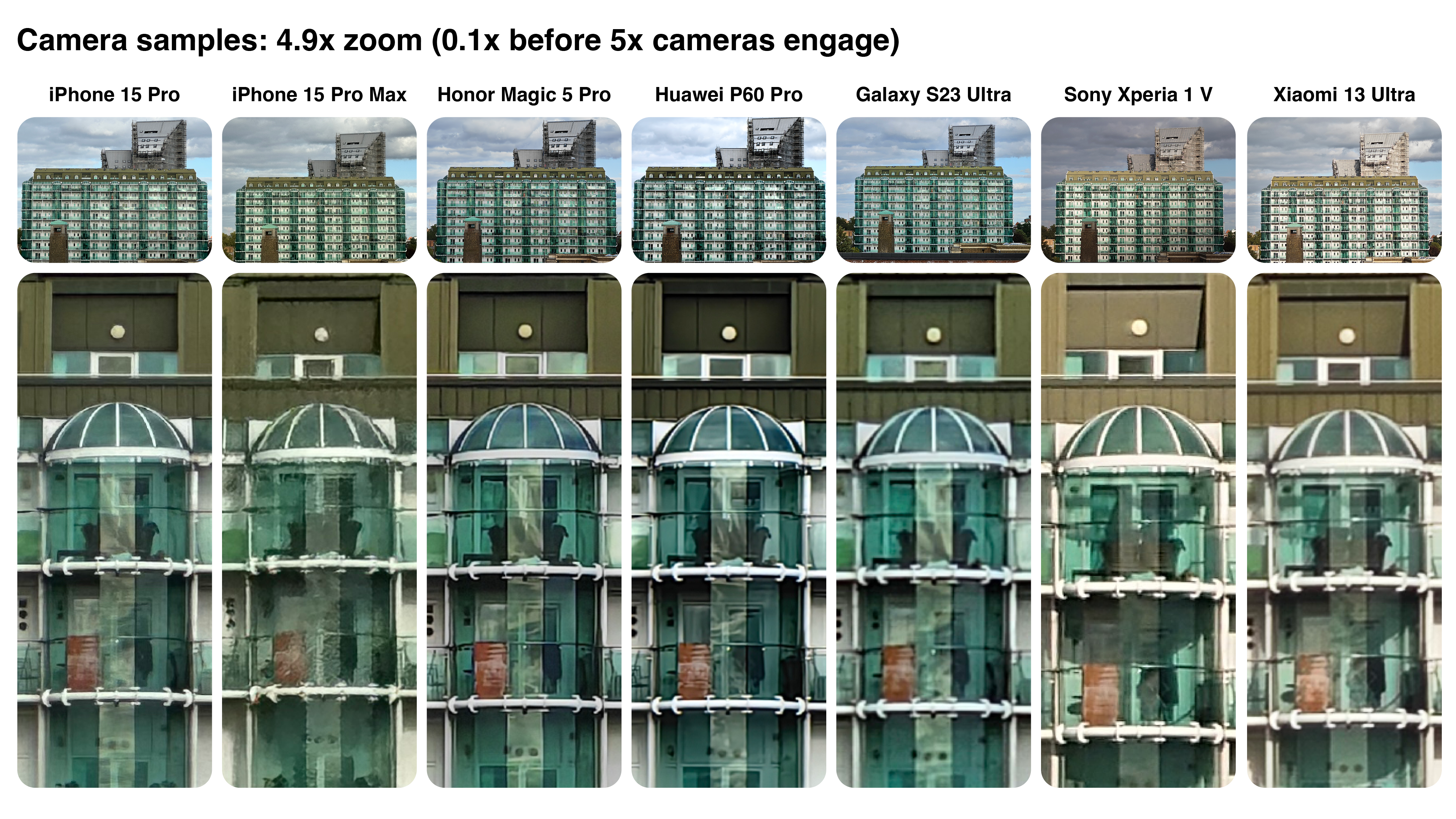
Now that Apple’s added reach to the mix, if Apple wants to compete and win in the smartphone camera wars, specifically when it comes to optical versatility, the iPhone 16 Pro Max, expected in 2024, could really do with a 50-60mm fourth camera so it covers all the bases.
Limitations aside, there’s no doubt after just a few days of use that the latest iPhones pack fantastic camera systems. However, which is the right choice for you won’t just be dictated by size this year; your style of photography will be a crucial factor.
iPhone 15 Pro Max: Additional features
Running iOS 17, the iPhone 15 Pro and Pro Max deliver the latest updates, including near-field Airdrop, auto-transcribed voice notes in messages, photo stickers (more fun than it sounds), and much, much more.
The iOS interface is, without a doubt, the most polished out there, and while it once stood for limiting simplicity, now, it’s as rich as complex as most will need it to be. Powering the experience is the Apple A17 Pro chipset, the first to benefit from a 3nm production process, which should result in efficiencies across the board.
The phone unlocks with Face ID and brings back tools like Apple Pay, the LIDAR scanner for advanced depth mapping, Siri, and all of Apple’s pre-loaded apps like FaceTime, Pages, Keynote, iMovie, and more.
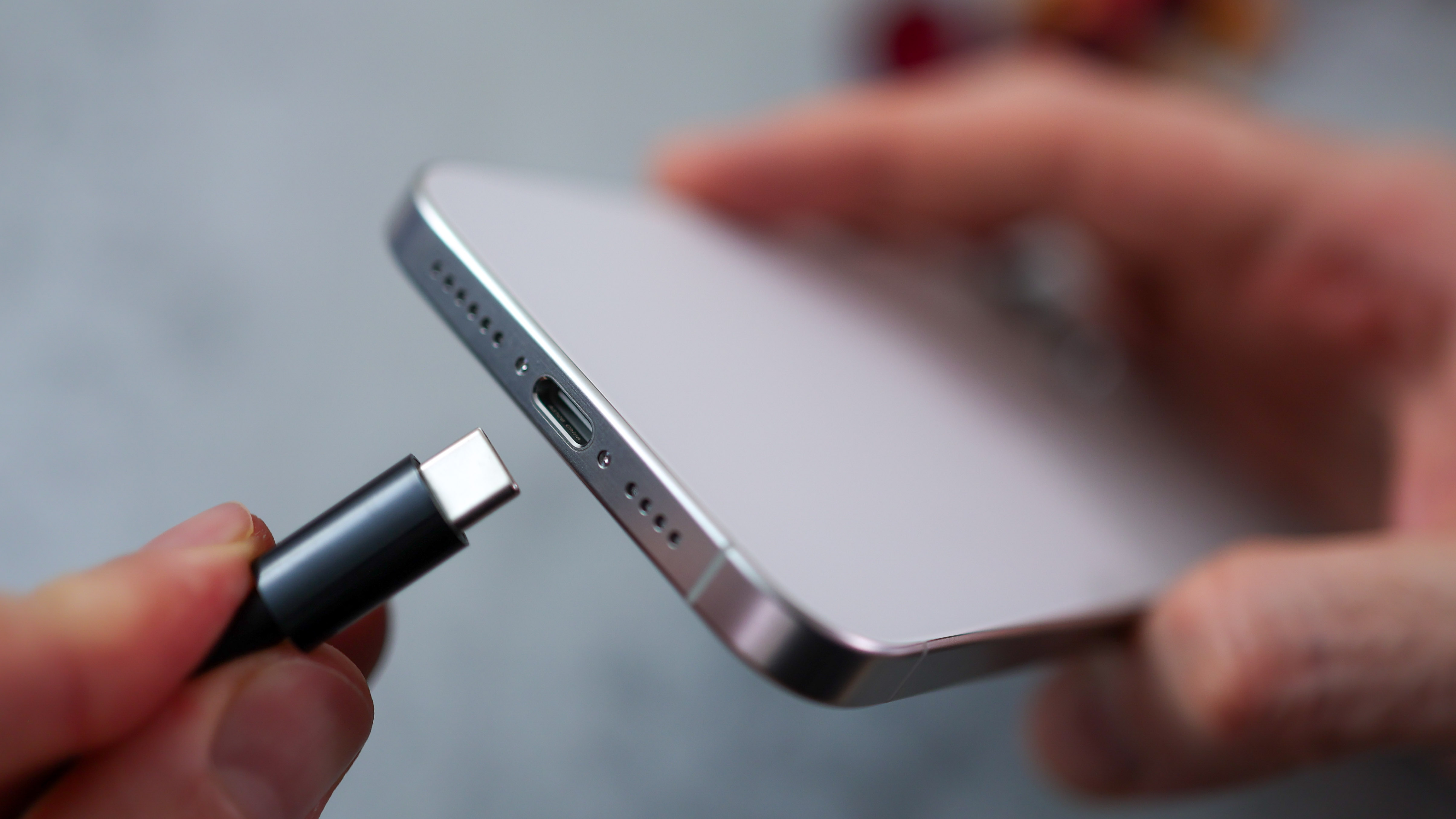
The most notable feature the USB-C port introduces for photo and video enthusiasts is the higher transfer speeds for the 15 Pro and Pro Max. With USB-3 support (though shipping with a slower cable), the new iPhones can wirelessly send data at up to 10GB/s – a boon for anyone who plans on shooting in ProRes.
The USB-C port has another superpower for video enthusiasts. It can capture ProRes at up to 4K 60fps, if you’re happy plugging in external storage and shooting to an SSD. What’s incredible about this feature is it enables an iPhone 15 Pro Max with minimum storage (256GB) to capture hours of ProRes footage, bypassing its limited internal memory. In the past, folks who wanted to use ProRes needed the highest-capacity option possible. Now, there’s scope to be a little kinder to your bank account.
The iPhone 15 Pro Max is available with either 256GB, 512GB, or 1TB, with pricing matching last year’s like-for-like storage option. For the Max, Apple has scrapped the 128GB storage capacity, so the barrier to entry is higher at its 256GB price, though the smaller iPhone 15 Pro can still be had at that 128GB, more affordable price point.
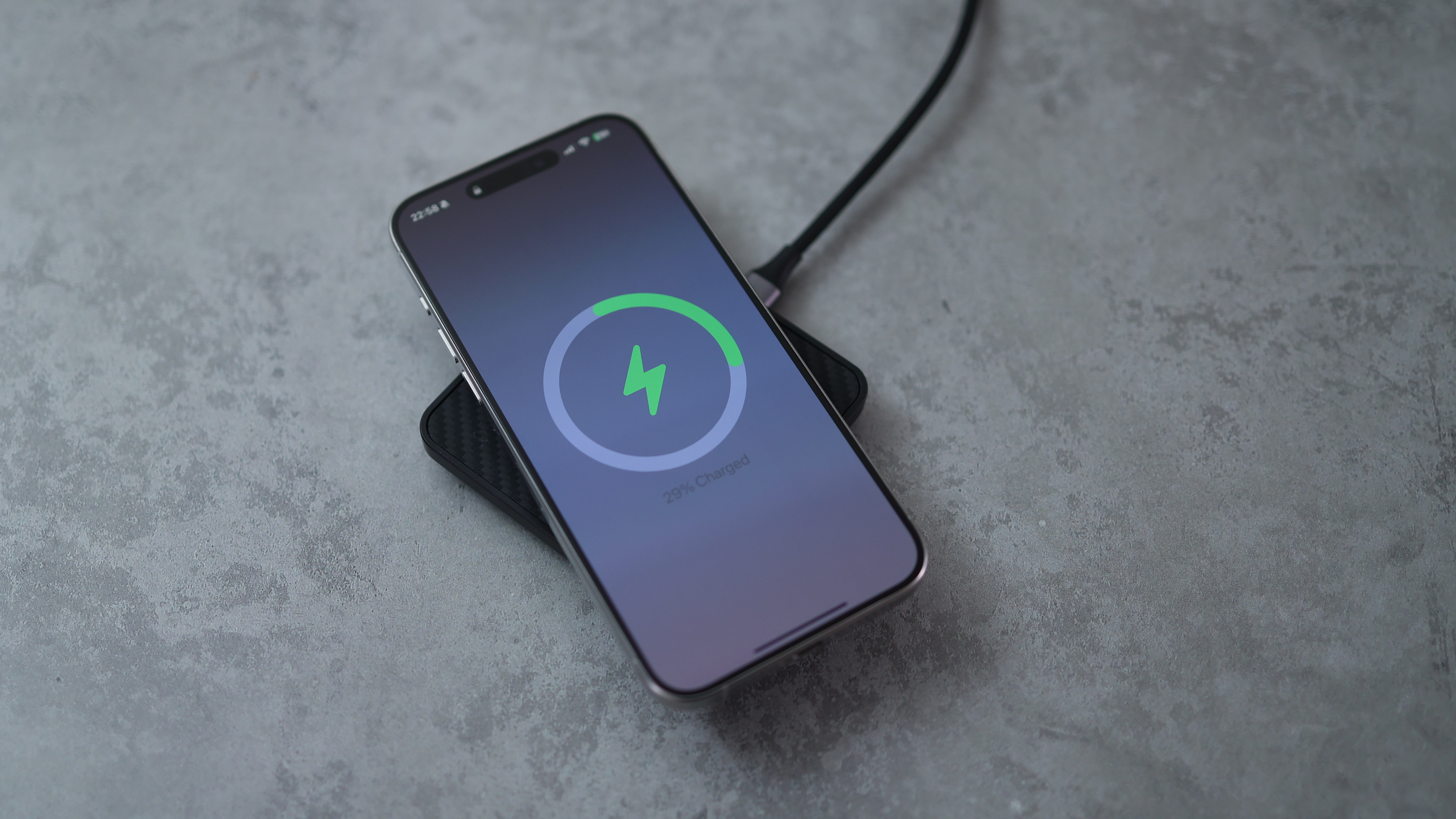
Apple has slightly increased the battery capacity of the Max versus last year, and we’re looking forward to seeing if the 15 Pro Max carries forward the 14 Pro Max’s strong performance.
Many hoped with a new USB-C port, Apple would increase the iPhone charging speeds, but the phone caps out at around 30W, powering up in roughly two hours – slower than the best Android phones on the scene. MagSafe is also back, so you can pair the new iPhones with existing magnetic chargers and accessories like the Mous modular charging system pictured above.
iPhone 15 Pro Max: Early verdict
There’s no doubt about it: the iPhone 15 Pro Max is a brilliant phone with a powerful camera system, and we’re just a few days in.
The limitations of now optical coverage between 1x and 5x zoom are real, so if you’re a photographer who lives in the 50-100mm range, you would be better off with the 15 Pro or possibly even the 14 Pro Max.
For anyone who wants the furthest reach possible, the iPhone 15 Pro Max delivers it, alongside improved design, upgraded internals, and a tremendous amount of functionality and convenience added by the new USB-C port.
For more extensive camera tests, check back for the full review in the coming weeks, and if you’re thinking about picking up a 15 Pro Max, be sure to read our guide to the best iPhone 15 Pro Max cases so you can safeguard your pricey, powerful new smartphone.
->Google Actualités











